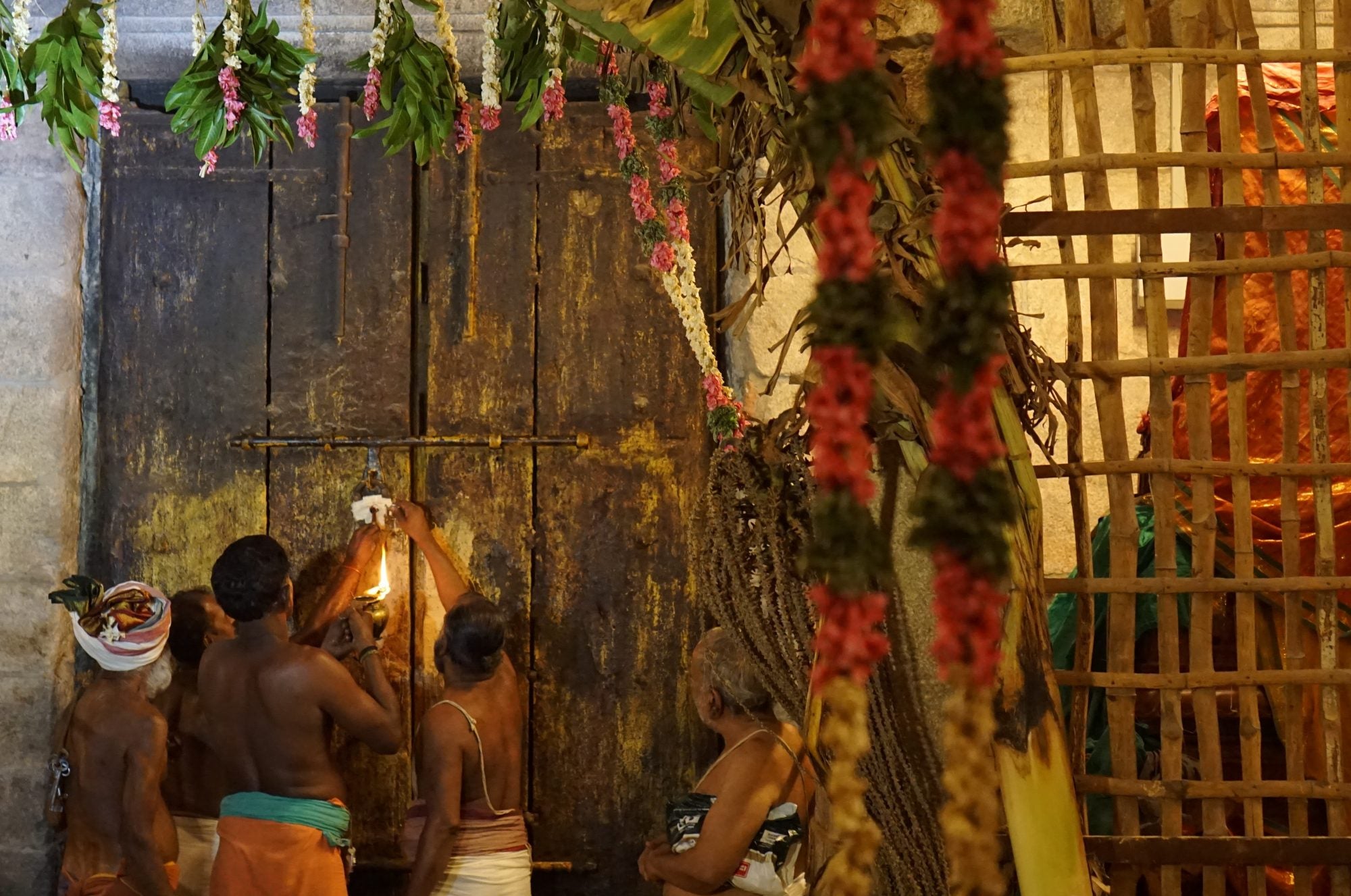I am really enjoying the new turn in my Nava Tirupati project–it’s been an eye-opener learning to work with(in) a network of temples. One of the things I’ve observed is the elegant choreography of movement. Not just that of the processional image (all the different gaits that the palanquin-bearers use..Vasudha Narayanan writes about this beautifully in Vernacular Veda, if I recall correctly), but particularly of the women as they come in and out of the temple. They know precisely where to stand and when. They know when to arrive to maximize not just their time, but their line of sight. While I sit around for hours together, not knowing precisely when an event is set to start, I can always tell by when the women begin to trickle. All dressed in their finery, clustered together, friends gossiping and chatting, gathering together in tight circles, while they wait in expectation. They position themselves just so, along the processional route. They know they must stand behind the men, but can position themselves for maximum vantage. They move in unison as the procession moves from place to place, from mandapam to mandapam, from akam to puram. I follow them faithfully, and once in a while, one of them will take pity on me and tell me where to stand. I learn how to see a procession, dare I say how to see god, by seeing the women.
Now, as for the men in the temple. Most of them are very good at yelling. Usually at me. I learn something different from them. I learn about being proprietary, I learn about protecting god from intruders, I learn about boundaries.
It’s a good thing I like Andal so much. She didn’t care for boundaries very much.
